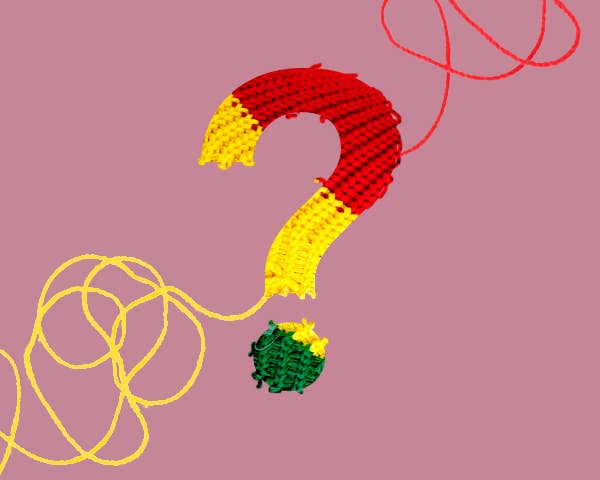1.

Pop music is created by its surroundings. It’s hard to even categorize exactly what pop music is beyond music that is merely popular—there are no definitive characteristics, just a structure. Again and again, pop music incorporates elements of niche sub-genres, aiming for the next big hit. Recently, mainstream music has looked towards Caribbean and African music for inspiration.
In the last year or so, we’ve heard it become one of the most dominant factors in top hits. Last October pop audiences were fed a soca/dancehall fusion layered under Justin Bieber’s vocals when “Sorry” topped the Billboard charts. Though it was passed off on several occasions as “tropical house,” it feels criminal to not call the music what it really is.
This rhythmic trend carried into the new year when Rihanna and Drake released their chart-topping single “Work” in January.
When Rihanna first emerged with her debut single “Pon de Replay” back in 2005, she introduced herself to the world with a dancehall-flavored pop record accessible enough to attract American ears. Her sound has come full circle, and she’s returning to her Caribbean roots.
However, it begs the question: if anyone else had released “Work,” would it have been as big? Probably not. And if Rihanna’s career hadn’t gone through the transformation that ultimately turned her into the megastar she is today, would the single have reached these same heights? Again, probably not.
But those “what ifs” aren’t what matters. The truth remains that a dancehall single—not a dancehall-inspired track—is reaching audiences worldwide. That hasn’t happened since Sean Paul followed in the path of Shaggy’s crossover success and opened the flood gates for some of the Caribbean’s brightest talents to find their way onto mainstream radio in the early 2000s. Between 2002 and 2006, five of Sean Paul’s singles landed in the top ten of Billboard’s Hot 100. While various Caribbean artists like Wayne Wonder, Rupee, Gyptian, Beenie Man, and Elephant Man have had singles in the Hot 100, none were able to reach Sean Paul’s level of success.
A decade later, larger audiences finally seem receptive to this sound again. In recent years, we’ve heard Jamaican dancehall artist Popcaan lend his vocals to Pusha T’s “Blocka” in 2012, Jamie xx’s “I Know There’s Gonna Be (Good Times)” last year, and AlunaGeorge’s “I’m In Control” in January. And although he wasn’t formally featured on a track, Popcaan’s voice can be heard all throughout Drake’s 2015 project If You’re Reading This It’s Too Late, like an unofficial narrator. Another familiar voice is that of Assassin, who has appeared on Kanye West’s “I’m in It” in 2013 and Kendrick Lamar’s “The Blacker the Berry” last year.
There’s no doubting that these co-signs from big hip-hop artists help to draw attention and sometimes introduce these entertainers to new audiences. But after the collaboration is said and done, dancehall artists haven’t garnered mainstream success for their solo efforts.
Popcaan’s debut album Where We Come From may have been the biggest dancehall release in the past decade. It received critical acclaim following its June 2014 release, scoring “universal praise” according to Metacrtic. For those deeply submerged into the Caribbean music scene, it’s easy to see the wheels beginning to turn. But Where We Come From sold only 995 copies in its first week, per Nielsen Soundscan and the Jamaica Observer.
Releasing quality music is only half the battle. Being able to connect with fans in person is really the most crucial aspect to solidifying stardom.
For some of today’s dancehall artists, especially many of Jamaica’s dancehall performers, the main factor holding them back is their lack of a visa. Musicians have resorted to playing shows on cruise ships—which sounds like an amazing memory to make one time.
Releasing quality music is only half the battle. Being able to connect with fans in person is really the most crucial aspect to solidifying stardom. This connection is nearly impossible to establish for artists like Popcaan, who hasn’t been granted permission to tour in the United States because of a marijuana possession charge on his record.
While dancehall has had a long history of influencing other genres, mainstream music is not looking exclusively to Jamaica for inspiration. Other influences like soca and afrobeat don’t yet have the same track record with hits in America, but they’re starting to become frequent references for Grammy presenters like Meghan Trainor.
Trinidadian soca artist Bunji Garlin found himself reaching new audiences in 2012 with the release of “Differentology.” Though the single strays from the traditional soca rhythms, it showcased that the genre was ready to evolve and stretch further. The single received airplay on primarily hip-hop stations, and the following year after taking a trip to Trinidad, A$AP Ferg released a freestyle over Garlin’s “Carnival Tabanca,” as well as a remix to Garlin’s carnival anthem “Trunk On D Road.”
Lately, deeper rhythms from Africa and Brazil have become common influences to recent releases. Ever since Seattle producer Sango began releasing his Da Rocinha series mixtapes in 2012—which heavily samples sounds from the Brazilian genre baile funk—Brazil’s distinctive, bouncy sound has found its way into more productions.
A similar bounce embedded within Nigerian afrobeat rhythms has also seeped into mainstream productions. Wizkid, one of today’s biggest afrobeat artists, received new attention last year when Drake and Skepta jumped on the remix of his 2014 single “Ojuelegba.” Wizkid has since linked up with Drake again on “One Dance,” and his name continues to pop up on new collaborations with R. Kelly, Major Lazer, and more.
Major Lazer—made up of DJs and producers from America (Diplo), Trinidad (Jillionare), and Jamaica (Walshy Fire)—work together to blend cultural sounds of the Caribbean, Africa, and South America. In theory, they work to create a platform to help introduce emerging artists to global audiences. The constant debate, however, revolves around whether they are promoting or exploiting.
In the past, it was close to impossible to track down source material and dive into different genres and cultures. Today, the access is easy, it just takes a little effort.
Trinidadian soca artist Erphaan Alves sees it in a positive light. “When you’re in a position where you have this amount of fans and you get the opportunity to get more exposure, it’s always a win/win.” For him, he only sees it being exploitive if the smaller artists don’t receive their deserved credits and royalties. “They would get a nice song, a nice different vibe—that would be the win for them. The win for me is that my popularity would skyrocket and that could open more avenues for me.”
But we’re still waiting to see a dancehall artist’s popularity skyrocket. Far more often, the big artists get bigger, and the smaller ones only benefit from a short-lived ascension that often hits an early plateau. Popcaan is on an incredible run—of features.
It’s hard to precisely pinpoint one main reason why audiences aren’t fully connecting with the creators of the sounds they’re starting to love. In the cases of afrobeat and baile funk, perhaps there’s a language barrier preventing full mainstream acceptance. New Jamaican legislation may improve Popcaan’s visa issues, but they’ll continue to be a major obstruction for now.
This isn’t news. Rock & roll was built off the foundation laid down by many blues artists who never got rich or famous, and pop music has been borrowing from niche and international scenes for decades.
But things are different today. In the past, it was close to impossible to track down source material and dive into different genres and cultures. Today, the access is easy, it just takes a little effort.
If a featured dancehall, soca, or afrobeat artist sparks your interest, follow them beyond that one song. It’s partially the fan’s duty to help put these global stars in demand. We can’t always control who breaks through and who doesn’t, but we can at least avoid being part of the problem.

